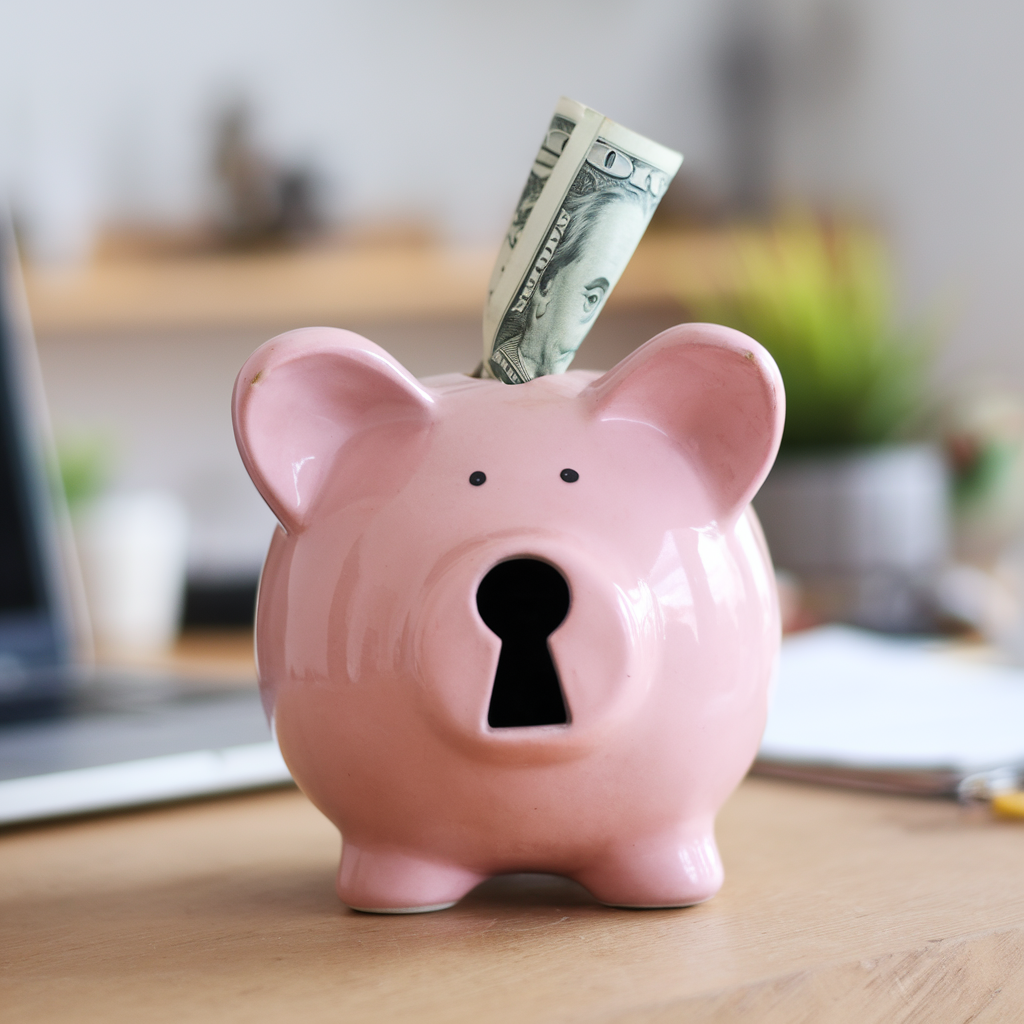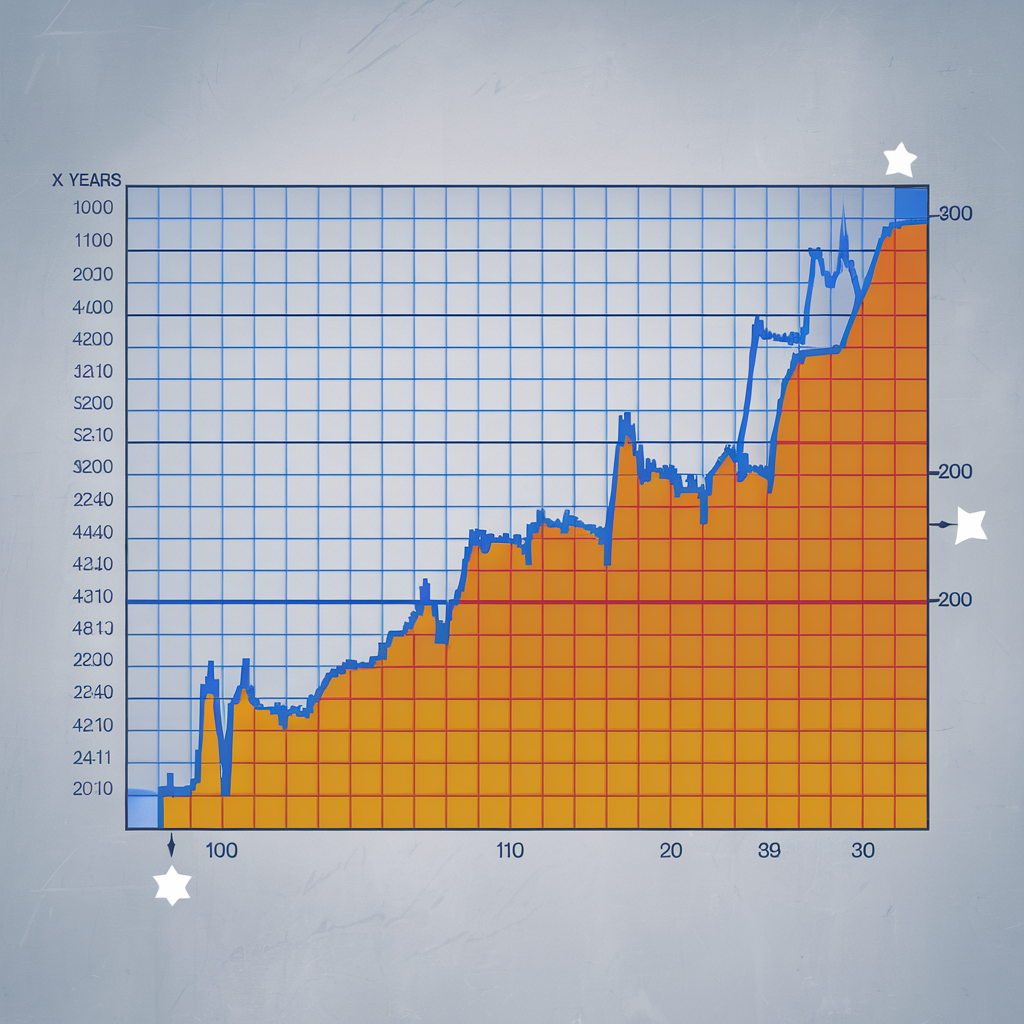Hey, you! Yes, you! Ever had one of those days where everything seemed to go pear-shaped—the stove exploded right before dinner, the cat knocked over your priceless Ming Vase, and, to complete the trifecta of misfortune, your phone decided to perform a high dive into the toilet? Okay, your life may not be that chaotic, but abrupt and unexpected happenstances are just as routine as coffee being hot. That’s where the beauty of an "emergency fund" tiptoes onto the scene. Although it may not be as exhilarating as crunchy tacos on a Tuesday, or as huggable as a fuzzy adorable kitten, believe us, it's like your very own financial superhero. The superpower description? Defeating unwelcomed surprises with a spectacular one-two punch! Getting started with building an emergency fund isn't always a leisurely walk in the park. In fact, it probably more resembles your first karaoke attempt. Horrifying, daunting, yet weirdly intriguing, right? Well, hang on to your seats. This guide is meticulously crafted to assist you through all the funky intricacies of creating a knight-in-shining-doller notes, AKA your emergency fund. Here, you’ll learn everything bright and brilliant—from setting your superhero goals to nurturing them to unmovable strength. Buckle up, friends. We promise, creating your financial safety net doesn’t have to feel like eating broccoli for the first time (Yep, we are not fans, either!). It’s time to seize the power of knowledge and turn every crisis into a non-event. Just think of this experience as hanging out with your coolest, most financially geeky buddy—Let’s dive into the wonderful world of emergency funds!
What is an Emergency Fund?

Think of it this way, imagine if life was a board game, every step representing an event or milestone. Suddenly, a miscue sends you spiraling backwards—a surprise job loss, perhaps, or an unexpected ill-health. Wouldn’t it be great to have a "Get out of jail" magical card that cushions these setbacks? That's where an emergency fund comes in, like a trusty sidekick; it provides just that financial buffer when you least expect needing one. An emergency fund—our financial safety net—is money saved separately from other long-term savings or spending allowances. It's there for you when life tosses a curveball your way, like a sudden car repair or a trip to the emergency room. But how much do you need in this fund? Experts recommend storing at least three to six months' income in it, but it ultimately depends on what level of emergency expense you reckon with personally. "But where do I start?" you might be thinking. Don't worry, you're not alone. Though the concept of an emergency fund might seem daunting, it's utterly doable – no magic trick or puzzle-solving thinking cap needed, promise! Start by briskly setting aside a small amount from your regular paycheck. Keep doing this consistently; before you know it, you'll have a sizeable emergency fund. Beyond stability, it also gives you the confidence to tackle any financial stumbling blocks head-on. So why wait another day? Channel your inner squirrel gathering nuts for winter or visualize this as building an invisible money fortress, and set up your emergency fund, however small, today! Remember, progress is still progress, no matter the speed.
Why You Need an Emergency Fund
So, let's dive into why you really need an emergency fund. Imagine you're at a thrilling music concert, right in the middle of your favorite band's high energy set. Suddenly, you lean back a bit too far and – whoops! – your smartphone slips from your fingertips. Death by slow-motion-impact! Now you're facing a hefty bill for a new phone, but you've forgotten to budget for such unexpected surprises. Bummer, right? Enter our hero, the emergency fund. An emergency fund is that super friend who lends you money when you accidentally send your phone stage diving. It steps in when your journey has sharp unexpected turns, like a flat tire, sudden illness, or heck, even a global pandemic. With an emergency fund, financial missteps transform from panic into something you can easily navigate. Now, you might say, "What's the buzz about an emergency fund? Why can't I just use a credit card or take out a loan?" Well, if you've ever been on a rollercoaster, you'll understand. Loans and credit cards are like being at the top of an inverted loop—thrilling yet head-spinning, accumulating scary-high interest payments as it loops. An emergency fund, on the other hand, is like knowing a safety net awaits at the bottom—you feel liberated, ready to take the plunge without the gut-wrenching fear of going broke. Ever heard of the phrase preparing for a rainy day? That's essentially what we’re chatting about. Although we're optimists at heart, it's wise to brace ourselves for unexpected storms. Financial peace of mind is achievable when we take proactive steps towards building an emergency fund. Why not take a shot at setting one up? You'd be surprised at the sense of security it brings! If anything, it's actually like an adult version of hide-and-seek—you stash some funds away, and when life throws a curveball, you know exactly where to find them. Let the fun savings challenge begin!
Setting Your Emergency Fund Goals
Expanding on our previous discussions, let's delve a step deeper – all the way down to setting your own emergency fund goals. Brace yourself, because things are about to get real—and a bit numbers heavy. But, hey, we're in this together, right? Let's waltz through this financial alley together. First things first, look at your monthly living expenses. These could range from your rent and utility bills, to grocery runs and night-outs with friends. The size of your emergency fund entirely depends on your typical wear and tear. Why? Picture this— you're cruising along, life is good, then BAM! Your car breaks down or, worse, you find yourself out of a job. Without turning to credit card debt or loans, your emergency fund should be these expenses' parachute. Most experts suggest setting back at least three to six months’ worth of expenses in your fund. Better yet, if you're feeling gutsy, why not shoot for a year's worth? And remember, you're young and flexible at this stage. Your emergency fund doesn’t need to be as large as that of someone with, let's say, a mortgage or school fees. So, take a deep breath. Setting your emergency fund goals may sound daunting, but remember, it's all about serving as your safety net. Always aim for the sky, but never lose sight of your reality. Start by curating your fund at a pace that works with your current income. Why not get a sideline gig to fill up the emergency fund faster? Try out new experiences and jobs you can do after hours. You don’t just end up with a fatter wallet– you'll also create incredible stories to tell! Your journey to financial freedom has only just begun. Your emergency fund goals are within reach. Remember, every penny saved is a step towards more security and assurance in your adventurous ride we call life. So why not start your emergency savings journey now, and see where it leads? Magic awaits!
How to Start Building Your Emergency Fund
It's fun to construct a skyscraper of savings, but where do you plant the first brick? Well, just imagine you're about to bake a cake, only this cake is your financial security, and the first ingredient is your income. That's right—your first greenback toward your emergency fund. Start with a pinch from your paycheck—try to save at least 20% of it. The beauty of this is, you won't have to warp your current lifestyle to do it! Reduce minor leisure expenses like takeouts or downloadable movies. Hey, cooking pasta as a make-believe Italian chef or watching cartoons on a Saturday night won't hurt, right? Next, find a safe spot to store your dough. Picture an impenetrable vault in an action film–an easily accessible, yet highly secure savings account. This holds your emergency fund separate from any binge-buying temptation. No deploying the fund for that shiny new gadget, alright? But forging ahead is not enough—you've got to keep the momentum going. Make your contributions automatic if possible. It's like putting your savings on cruise control; money automatically moves from your check to your emergency stash. Before you realize, your dollars start multiplying! Now that you've mastered the 'how,' I must warn you about the big pitfall we all face—impatience. You might feel frustrated if progress seems slow. But let me recast that for you: It is not a sprint; it is a marathon. True, it does require patience, but once you gaze at the towering savings, it engulfs despair and radiates hope. Take a crack at this, friend, and let's start building that cake… I mean, emergency fund—you'll taste the sweetness of financial security soon!
Where to Keep Your Emergency Fund
Building on the insights shared earlier, you now have a firm understanding of why an emergency fund matters. But before we tackle the sensible ways to build it, let's sidestep into where you should squirrel away this vital buffer. Straight to the point, folks – hiding money under your mattress won't cut the mustard. You want to keep your emergency fund safe, secure, and accessible – like a friendly neighborhood superhero. Think of it as stowing away your lifeline on a shelf that’s a button press away but also hidden from greedy villain eyes. Remember the “accessibility” superpower we chatted about last time? Well, cargo pants might be out of fashion, but in our metaphor, they're gold. Let’s use that to continue our investment storyboard. The best place for your emergency fund is indeed similar to a pair of cargo pants – easy to reach into when you need your keys (read money) urgently, but still able to protect them with various layers, sort of like zip-close pockets. So what constitutes these financial cargo pants? Imagine the high-rise savings accounts and money-market accounts as your snug fit waist. These options typically offer higher interest rates than standard savings accounts and come with FDIC insurance—an absolute must-have when it comes to an emergency fund. Then the roomy leg pockets we’ll sketch as Certificates of Deposit (CDs) which you can add to your money mix when you already have a decent amount saved up. But remember, CD’s have certain fixed time frames, so you've got to be able to carry on without the money saved there for a while. Right, I’m going to pull us back from this pants metaphor, before I carry away and start talking about retirement socks or investment gloves! Say, how about giving that high-yield savings account a whirl for your emergency fund? This would be the first, and one of the most secure steps into smart finance! As we've seen, when it comes to the necessary funds, play it safe and err on the side of caution. Let’s carry these lessons onward— next up, we're tackling how to build up this critical piece of financial security. We hope our flashy fashion metaphor made sense, but we all know sometimes even the sharpest pairs of cargo pants get a rip. That's where knowledge on repairing your financial pants (i.e., rebuilding your emergency funds) can come in handy! So, why not take a shot at our next topic and see where it leads? But hey, I've just realized the fashion metaphor might only work for me – and if it's not your style, that's cool! You get to choose your own adventure here, and that’s precisely what makes financial literacy such an important, empowering step. And who knows— maybe your alertness will spread and cause a waterfall effect— from improving individual stability to enhancing the social impact as well! It's quite a ride, isn't it? And we’re glad you're on it with us!
Tips for Maintaining Your Emergency Fund
Continuing our financial adventure, dear chums, tooling up with your newly minted emergency fund is a wild ride indeed. But turning it into the Swiss Army knife for personal finance demands a little tango between responsibility and creativity. And frankly, keeping it clean and polished is a heck of a gig. Firstly, view your emergency fund the way you would your crazy high school friend who's always up for the adventurous ride but has solid wisdom at the same time. In essence, you only call on them for dire same-day concert ticket needs and other out-of-the-blue situations. Remember, the rainiest day—that's when you break the glass on your emergency fund. So, try not placing the fund in areas vulnerable to sudden losses. Let’s say, Investing it in a volatile stock might seem like you're ticketing the top seat in a roaring rollercoaster, but chances are you'll get a nasty surprise when your fortunes plunge uncontrolled. Instead, stash your fund into snuggly savings accounts or CDs that offer quick withdrawals. It's like putting a parachute in your backpack before you go skydiving… because you absolutely wouldn’t go without it, would you? But hang in there pals, one essential tip: don't deplete the fund in a single jamboree. It's akin to guzzling the life-saving water cask all at once whilst lost in the desert. Stretch it, ration it, so it lasts for emergencies only, while you refill the fund pool. So, how about taking a stab at maintaining your emergency fund? Remember, it's the life-preserver amidst your exhilarating route of personal finances. And as we always say, be adventurous but remember to stay safe out there!
Common Questions About Emergency Funds
Rolling along into the whirlpool of questions most beginners have about building an emergency fund, you might just find yourself bobbing on top, struggling to decipher the mysterious language of finance. No worries, we've all been there. Unsure how much to save? Where to store it? Or panicking because you think you’ve started late? Let's dismantle that financial minefield and illuminate the path together! So, what's the ideal amount to stow away in your emergency fund? Well, minimum ballpark figure, think three to six months of living expenses. No exact number suits everyone, remember, your emergency fund is like your own personal safety net—it depends on your lifestyle, income, monthly costs, and risk tolerance. Initiate a basic audit of your expenses. Now, imagine covering that from your emergency fund. Feel safe? A bit more at ease? Bingo! Wait a sec. Bank account or hidden under a mattress? Saving is great, knowing where to place your emergency cash—for quick accessibility and not to sizzle away with inflation—is crucial. Explore options like high-yield savings accounts, money market accounts, or short-term CDs. You wouldn’t lock your fire extinguisher in a safe, would you? Think about it. Your emergency fund needs to be easy to reach yet protected and oh-so-ready for any rough waves heading your way. Here’s a funny thought to ponder: How can I start an emergency fund late in the game? You know what's great about starting an emergency fund right now? It's better than starting tomorrow! So what are you waiting for? Grab that nearest piggybank or open a new bank account. Off to the financial races, but remember—steady does it. Even small steps make big waves over time. To truly figure out this emergency fund kerfuffle, know that it’s perfectly okay to ask questions, feel a bit lost, maybe even a little overwhelmed. Hey, exploring the unknown finances-like wilderness is just part of this wild ride we call adulthood! Keep galloping on!
Conclusion
And so, just like that, we've dived headfirst into the wonderfully wild world of emergency funds. Quite the adventure, eh? This beginner's guide has been your trusty map, charting the course from 'What on earth is an emergency fund?' to 'I'm becoming a financial whiz just by setting up my own fund!' Now we've been on this thrilling journey together, transforming financial despair into a beacon of hope. It's not simply about bulking up your bank balance but making a genuine social impact on your life. Experience has taught us that when you're prepared—financially, mentally, physically—the world is truly your oyster. Your emergency fund can quickly become your lifeline, turning potential pitfalls into stepping stones towards a stronger, financially secure future. And hey, it's OK if you don't get it all right in the first go. You're not defining Newton's third law here; you're doing something even more powerful—you're defining your own path to financial independence and security. So why wait another day? Grab the reins and gallop towards financial freedom. Step by step, dollar by dollar, watch your emergency fund grow stronger—just like you. It's not about the destination, it's about the journey, and this journey can illuminate the path through life's unexpected twists and turns. Don't hesitate to dive back into the guide whenever you need a reminder or a motivational boost. And remember, you're not alone on this trail-blazing mission. We're all in this together. Now, go forth, arm yourself with knowledge, and conquer your financial future! Why? Because you've got this, and it's Time to make every day your financial Independence Day! Now, how's that for a climactic ending?


